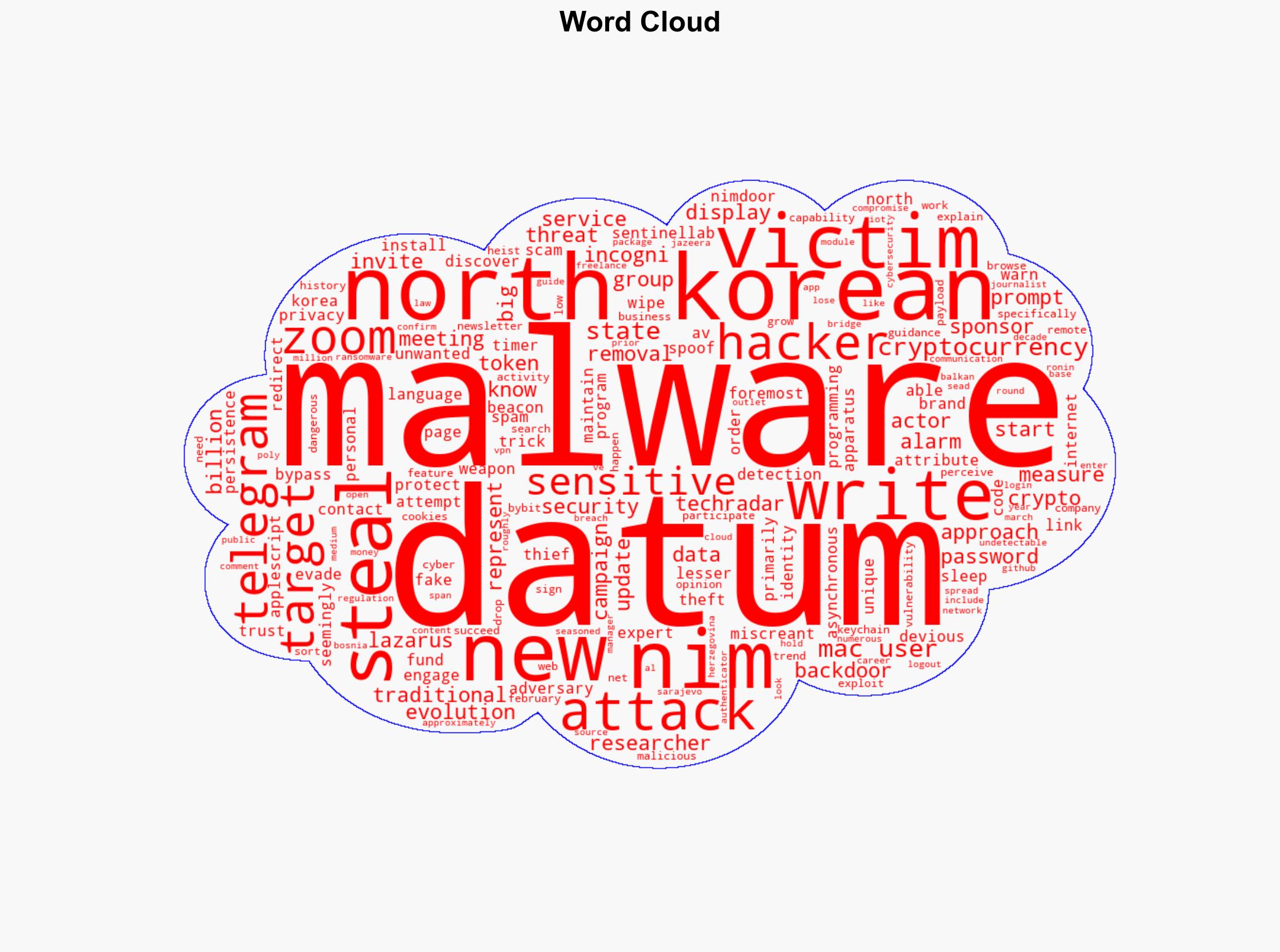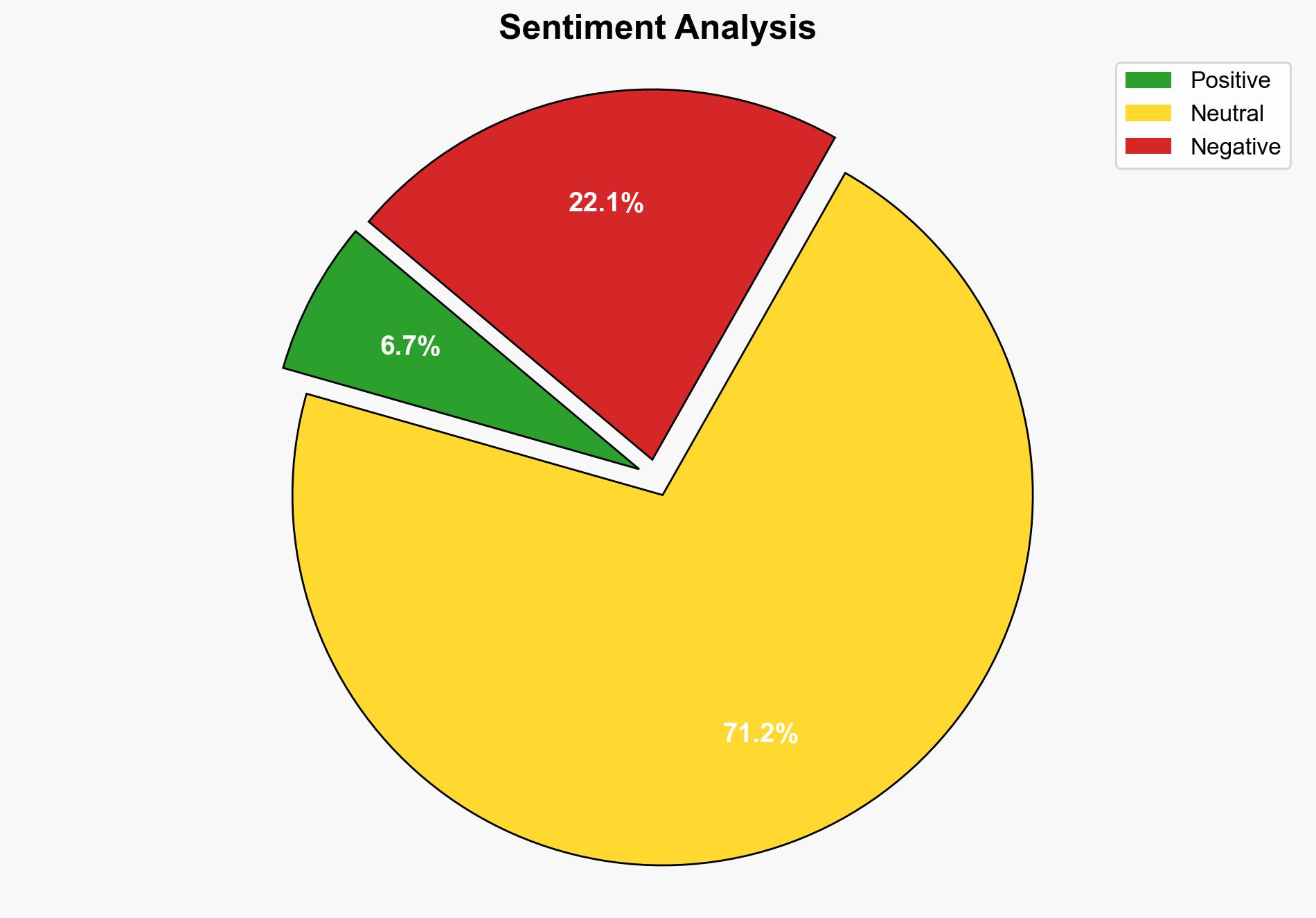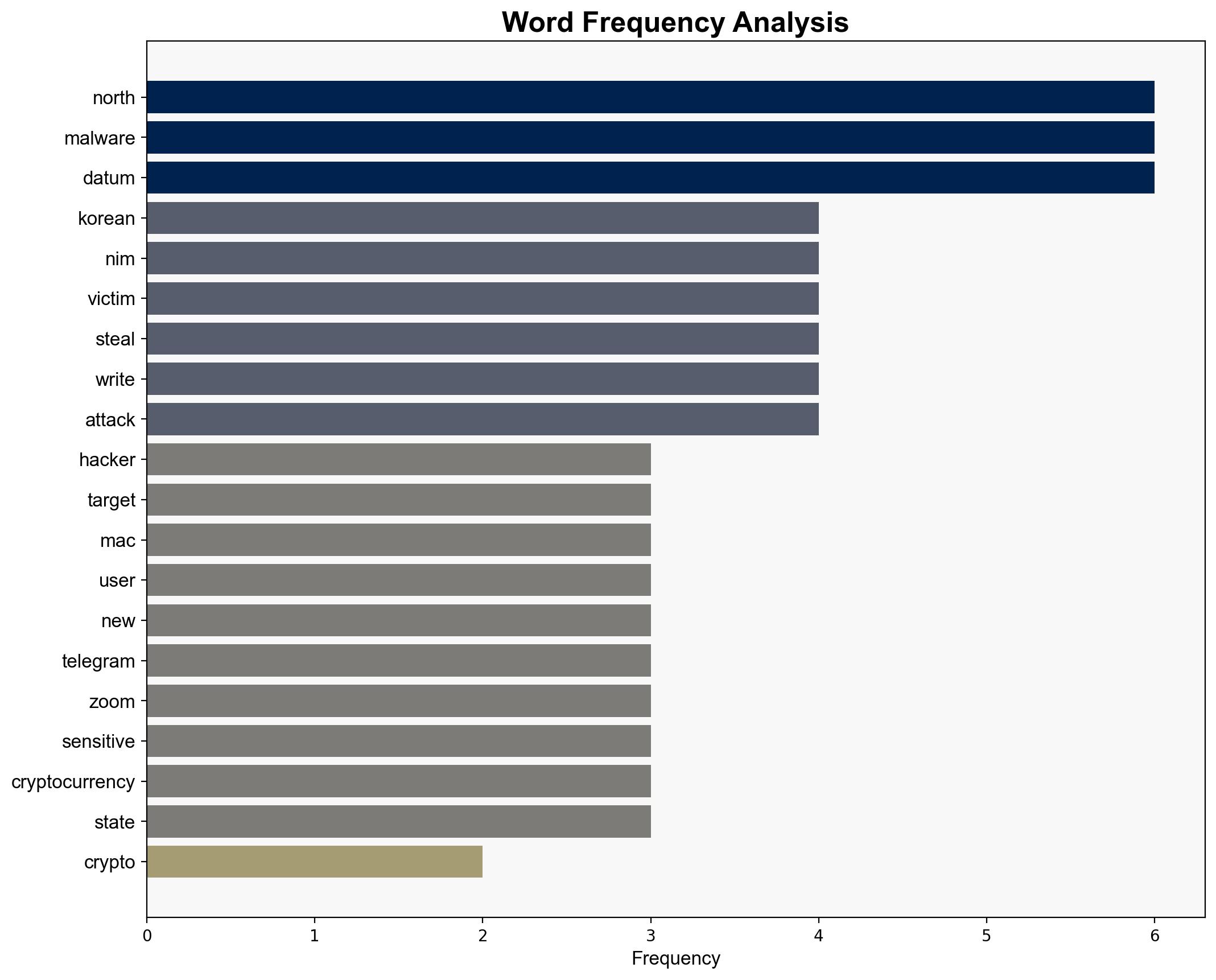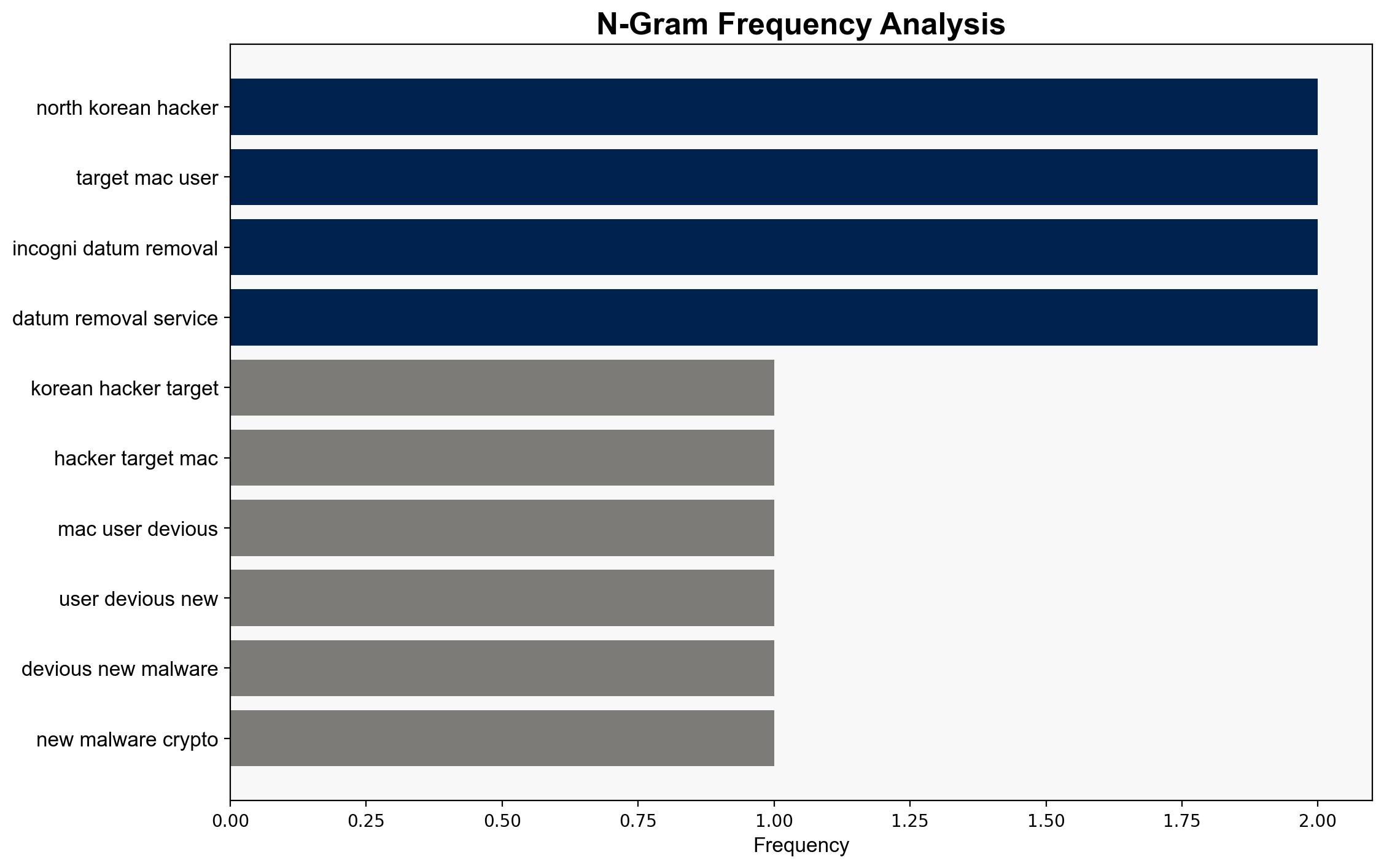North Korean hackers target Mac users with devious new malware – TechRadar
Published on: 2025-07-03
Intelligence Report: North Korean hackers target Mac users with devious new malware – TechRadar
1. BLUF (Bottom Line Up Front)
North Korean state-sponsored hackers have developed a new malware targeting Mac users, primarily aiming to steal cryptocurrency and sensitive data. The malware, known as Nimdoor, is written in the Nim programming language, allowing it to bypass traditional antivirus measures. It exploits remote work trends by using social engineering tactics, such as fake Zoom meeting invitations, to deliver its payload. Immediate actions are recommended to enhance cybersecurity measures and awareness among potential targets.
2. Detailed Analysis
The following structured analytic techniques have been applied to ensure methodological consistency:
Adversarial Threat Simulation
Simulated actions of North Korean cyber adversaries reveal vulnerabilities in remote work setups, particularly through social engineering and malware delivery via trusted communication platforms.
Indicators Development
Identified indicators include unusual network activity, unauthorized access attempts, and unexpected software installations, suggesting early signs of compromise.
Bayesian Scenario Modeling
Probabilistic models predict a high likelihood of increased attacks on cryptocurrency holders and tech companies, with potential pathways including phishing and software exploitation.
Network Influence Mapping
Mapping of influence relationships indicates a coordinated effort by North Korean entities to leverage open-source platforms for malware distribution.
3. Implications and Strategic Risks
The emergence of Nimdoor malware signifies an evolution in North Korean cyber capabilities, posing significant risks to financial sectors and individual users. The use of lesser-known programming languages for malware development increases detection challenges. This trend could lead to broader systemic vulnerabilities if not addressed, affecting both national and international cybersecurity landscapes.
4. Recommendations and Outlook
- Enhance cybersecurity training focused on recognizing social engineering tactics, particularly for remote workers.
- Implement advanced threat detection systems capable of identifying anomalies associated with Nimdoor malware.
- Scenario-based projections suggest a best-case scenario of improved defenses reducing attack success rates, a worst-case scenario of widespread financial theft, and a most likely scenario of continued targeted attacks with moderate success.
5. Key Individuals and Entities
The report identifies the Lazarus Group as a key entity involved in these activities, known for previous high-profile cyberattacks.
6. Thematic Tags
national security threats, cybersecurity, cryptocurrency theft, remote work vulnerabilities




